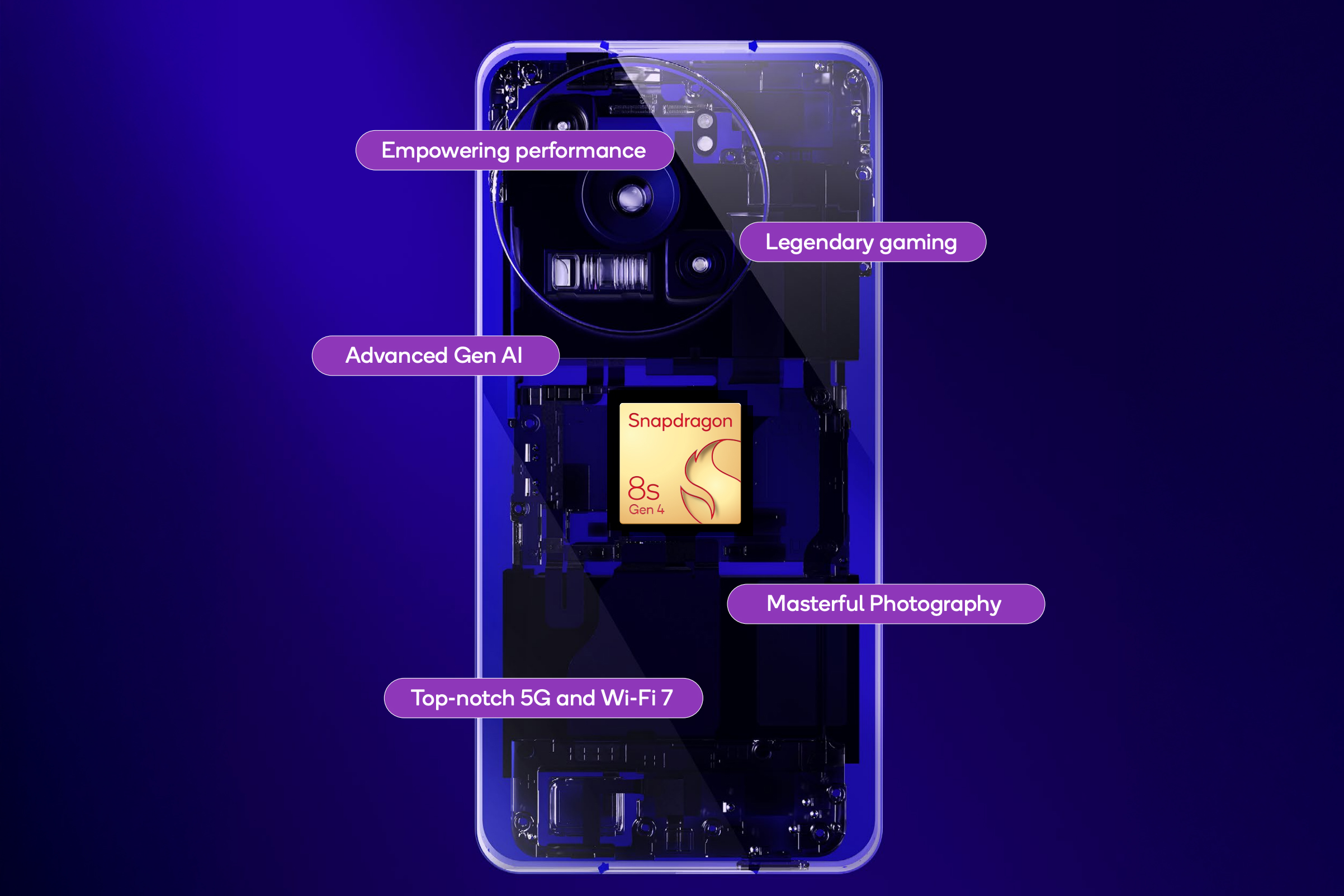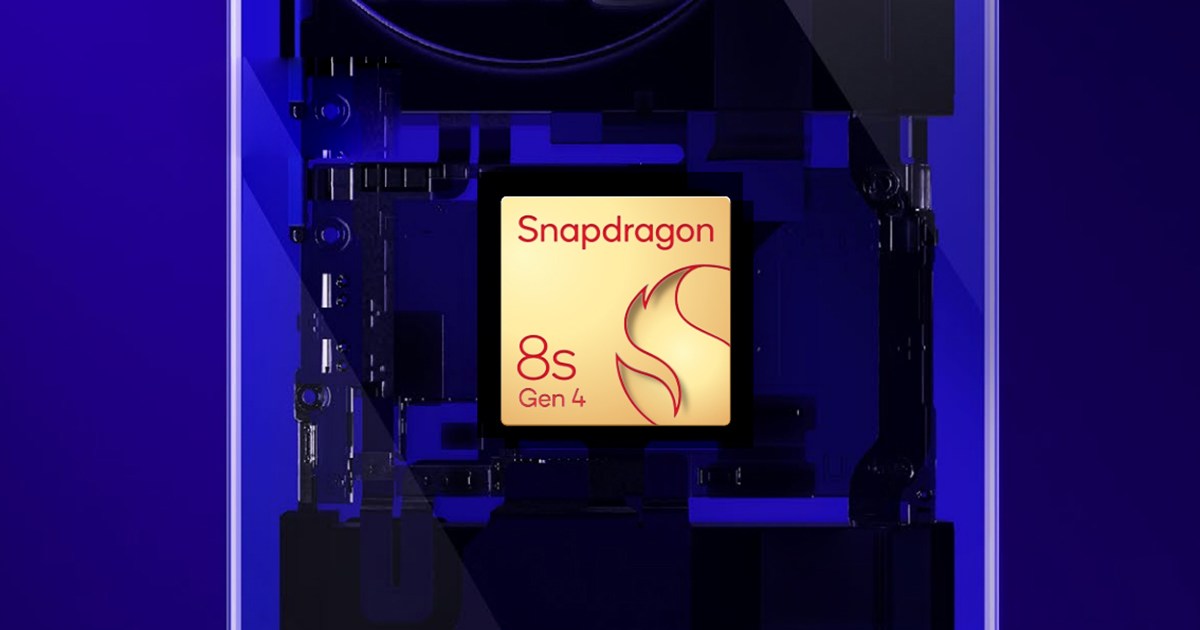Qualcomm has announced a new sub-flagship Snapdragon mobile chipset aiming at brands that want to offer a near premium experience but at a price much lower than traditional flagships. The Snapdragon 8s Gen 4 is tucked under the top-tier Snapdragon 8 Elite and brings reasonable upgrades over its successor.
Making a sense of these changing can be a bit taxing if you aren’t up to Qualcomm’s latest naming. The “S” variants are typically lower-powered variants of chips, offering similar features in areas such as connectivity while cutting back somewhat on core performance. Likewise, the Snapdragon 8s Gen 4 — which isn’t called the Snapdragon 8s Elite for the reason we will discuss below — comes with specifications that lie somewhere close to the Snapdragon 8 Gen 3, which was Qualcomm’s previous flagship chipset that powered flagship phones throughout 2024, such as Galaxy S24 and OnePlus 12.
If we talk technical specifications, the Snapdragon 8s Gen 4 is stocked with an eight-core CPU, comprising one Cortex X3 prime core at 3.2GHz, three Kyro mid cores based on Arm’s Cortex A720 design and clocked at 3.0GHz, two more at 2.8GHz for slightly lower power draw, and finally, two additional A720 cores at 2.0GHz for more efficient processing. It’s till build on TSMC’s 4nm N4P process instead of the more advanced 3nm node.
Even though these figures are slightly below the Snapdragon 8 Gen 3 flagship chipset, there is a remarkable upgrade over the Snapdragon 8s Gen 3, which used less power A520 cores for efficiency tasks. Qualcomm says there is a 31% bump in performance while using 39% less power than the 8s Gen 3.
It’s surprising that Qualcomm continues to use Arm’s v9.2 reference design instead of furbishing the chipset with its proprietary Oryon cores seen on the Snapdragon X laptop chips as well as the Snapdragon 8 Elite. Notably, Qualcomm recently won a legal battle against Arm, which had previously threatened to cancel the former’s license, alleging misuse of intellectual property for developing its own chip design. This is one reason to stick to the older naming, instead of switching to the “Elite” nomenclature. Another could be to maintain the exclusivity of its higher-end chips.
For GPU, the Snapdragon 8s Gen 4 gets a fresh Adreno 825 GPU, which suggestively is closer to the Adreno 830 running graphics-related tasks on the 8 Elite than the Adreno 750 on the 8 Gen 3. Qualcomm claims a roughly 50% performance boost here too, but only compared to the 8s Gen 3. The GPU also allows on-device ray tracing along with Snapdragon Elite Gaming features such as Frame Motion Engine and Super Resolution for upscaling low-end games. The GPU is claimed to enable gaming with visual rendering in HDR10, HDR10+, and Dolby Vision — though the actual performance will rely on game developers adopting support.

The chipset also gets a boost in AI processing, with a 44% claimed boost over the last generation. Since the Snapdragon 8s Gen 3 already allowed on-device running on large language models, the same is expected of the 8s Gen 4 too. Qualcomm doesn’t specify the NPU’s exact compute but says it uses twice the shared memory and multi-modal generative AI models.
Besides other improvements, the Snapdragon 8s Gen 4 also gets a new X75 modem, which enables download speeds up to 4.2Gbps, though support for mmWave has been disabled. In addition, the chipset is ready for Wi-Fi 7 and Bluetooth 6.0 networks.
There’s lack of word on which brands or phone models will be among the first to adopt this chipset but expect the likes of Xiaomi, Poco, and Motorola to be in the clique. We might as well see OnePlus join in, especially since the gap with Snapdragon 7 series chips has widened.
Read the full article here















